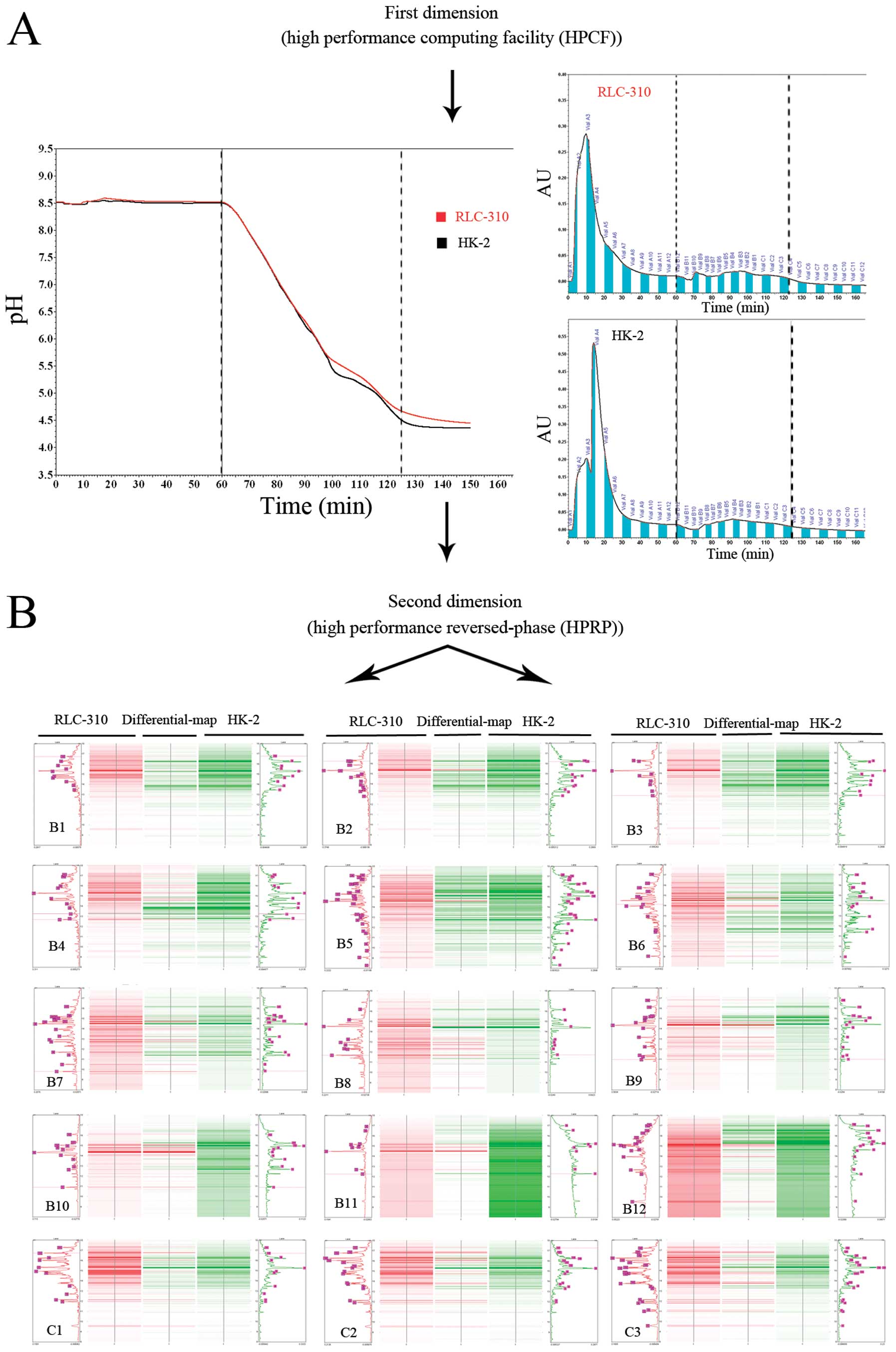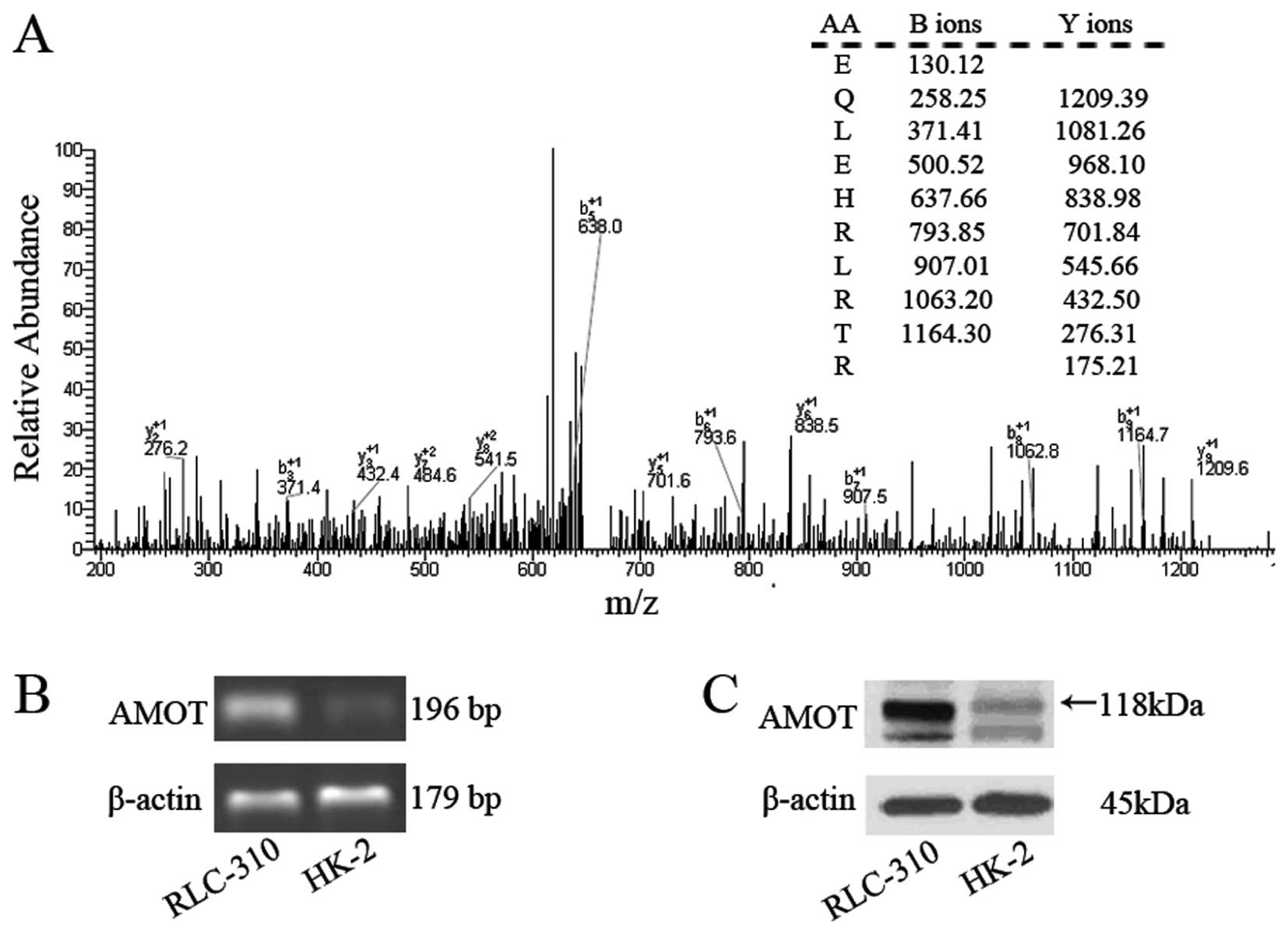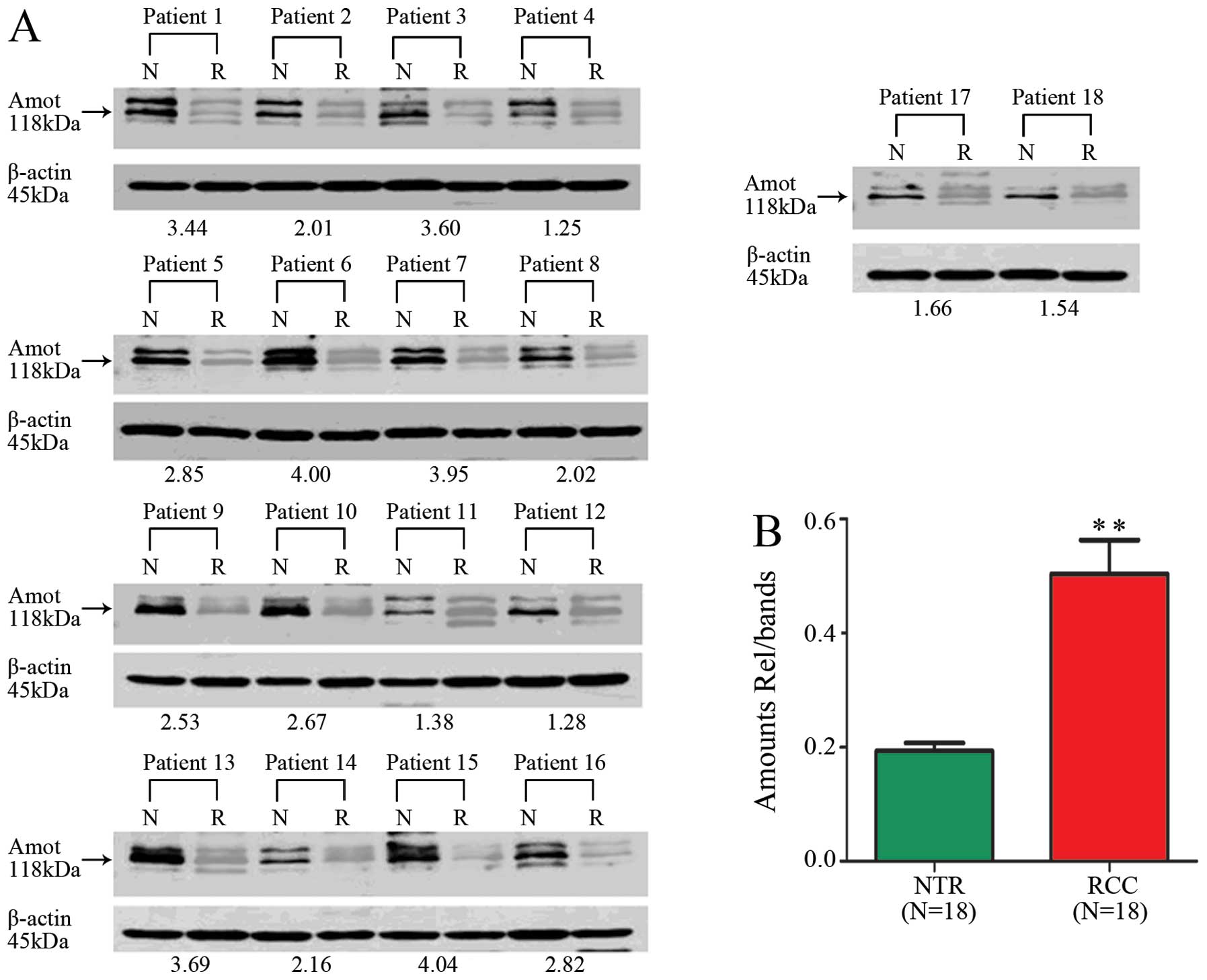|
1
|
Jemal A, Bray F, Center MM, Ferlay J, Ward
E and Forman D: Global cancer statistics. CA Cancer J Clin.
61:69–90. 2011. View Article : Google Scholar
|
|
2
|
Drucker BJ: Renal cell carcinoma: current
status and future prospects. Cancer Treat Rev. 31:536–545. 2005.
View Article : Google Scholar : PubMed/NCBI
|
|
3
|
Fisher RI, Rosenberg SA and Fyfe G:
Long-term survival update for high-dose recombinant interleukin-2
in patients with renal cell carcinoma. Cancer J Sci Am. 6(Suppl 1):
S55–S57. 2000.PubMed/NCBI
|
|
4
|
Messing EM, Manola J, Wilding G, et al:
Phase III study of interferon alfa-NL as adjuvant treatment for
resectable renal cell carcinoma: an Eastern Cooperative Oncology
Group/Intergroup trial. J Clin Oncol. 21:1214–1222. 2003.
View Article : Google Scholar : PubMed/NCBI
|
|
5
|
Gonzalez LJ, Espinosa E, Garcia CI, et al:
Sequential therapy in metastatic renal cell carcinoma: pre-clinical
and clinical rationale for selecting a second- or subsequent-line
therapy with a different mechanism of action. Cancer Metastasis
Rev. 31(Suppl 1): S11–S17. 2012. View Article : Google Scholar : PubMed/NCBI
|
|
6
|
Patard JJ, Pouessel D, Bensalah K and
Culine S: Targeted therapy in renal cell carcinoma. World J Urol.
26:135–140. 2008. View Article : Google Scholar : PubMed/NCBI
|
|
7
|
Rathmell WK and Chen S: VHL inactivation
in renal cell carcinoma: implications for diagnosis, prognosis and
treatment. Expert Rev Anticancer Ther. 8:63–73. 2008. View Article : Google Scholar : PubMed/NCBI
|
|
8
|
Audenet F, Yates DR, Cancel-Tassin G,
Cussenot O and Roupret M: Genetic pathways involved in
carcinogenesis of clear cell renal cell carcinoma: genomics towards
personalized medicine. BJU Int. 109:1864–1870. 2012. View Article : Google Scholar : PubMed/NCBI
|
|
9
|
Cho IC and Chung J: Current status of
targeted therapy for advanced renal cell carcinoma. Korean J Urol.
53:217–228. 2012. View Article : Google Scholar : PubMed/NCBI
|
|
10
|
Simpson RJ and Dorow DS: Cancer
proteomics: from signaling networks to tumor markers. Trends
Biotechnol. 19:S40–S48. 2001. View Article : Google Scholar : PubMed/NCBI
|
|
11
|
Banks RE, Craven RA, Harnden P, Madaan S,
Joyce A and Selby PJ: Key clinical issues in renal cancer: a
challenge for proteomics. World J Urol. 25:537–556. 2007.
View Article : Google Scholar : PubMed/NCBI
|
|
12
|
Petricoin EF, Zoon KC, Kohn EC, Barrett JC
and Liotta LA: Clinical proteomics: translating benchside promise
into bedside reality. Nat Rev Drug Discov. 1:683–695. 2002.
View Article : Google Scholar : PubMed/NCBI
|
|
13
|
Arsanious A, Bjarnason GA and Yousef GM:
From bench to bedside: current and future applications of molecular
profiling in renal cell carcinoma. Mol Cancer. 8:202009. View Article : Google Scholar : PubMed/NCBI
|
|
14
|
Nogueira M and Kim HL: Molecular markers
for predicting prognosis of renal cell carcinoma. Urol Oncol.
26:113–124. 2008. View Article : Google Scholar : PubMed/NCBI
|
|
15
|
Wood SL, Rogers M, Cairns DA, et al:
Association of serum amyloid A protein and peptide fragments with
prognosis in renal cancer. Br J Cancer. 103:101–111. 2010.
View Article : Google Scholar : PubMed/NCBI
|
|
16
|
Yang J, Li A, Yang Y and Li X:
Identification of cyclophilin A as a potential prognostic factor
for clear-cell renal cell carcinoma by comparative proteomic
analysis. Cancer Biol Ther. 11:535–546. 2011. View Article : Google Scholar : PubMed/NCBI
|
|
17
|
Chen C, Ridzon DA, Broomer AJ, et al:
Real-time quantification of microRNAs by stem-loop RT-PCR. Nucleic
Acids Res. 33:e1792005. View Article : Google Scholar : PubMed/NCBI
|
|
18
|
Chang JT, Chen IH, Liao CT, et al: A
reverse transcription comparative real-time PCR method for
quantitative detection of angiogenic growth factors in head and
neck cancer patients. Clin Biochem. 35:591–596. 2002. View Article : Google Scholar : PubMed/NCBI
|
|
19
|
Kikuno R, Nagase T, Ishikawa K, et al:
Prediction of the coding sequences of unidentified human genes.
XIV. The complete sequences of 100 new cDNA clones from brain which
code for large proteins in vitro. DNA Res. 6:197–205. 1999.
View Article : Google Scholar
|
|
20
|
Troyanovsky B, Levchenko T, Mansson G,
Matvijenko O and Holmgren L: Angiomotin: an angiostatin binding
protein that regulates endothelial cell migration and tube
formation. J Cell Biol. 152:1247–1254. 2001. View Article : Google Scholar : PubMed/NCBI
|
|
21
|
Levchenko T, Bratt A, Arbiser JL and
Holmgren L: Angiomotin expression promotes hemangioendothelioma
invasion. Oncogene. 23:1469–1473. 2004. View Article : Google Scholar : PubMed/NCBI
|
|
22
|
Jiang WG, Watkins G, Douglas-Jones A,
Holmgren L and Mansel RE: Angiomotin and angiomotin like proteins,
their expression and correlation with angiogenesis and clinical
outcome in human breast cancer. BMC Cancer. 6:162006. View Article : Google Scholar : PubMed/NCBI
|
|
23
|
Holmgren L, Ambrosino E, Birot O, et al: A
DNA vaccine targeting angiomotin inhibits angiogenesis and
suppresses tumor growth. Proc Natl Acad Sci USA. 103:9208–9213.
2006. View Article : Google Scholar : PubMed/NCBI
|
|
24
|
Levchenko T, Veitonmaki N, Lundkvist A, et
al: Therapeutic antibodies targeting angiomotin inhibit
angiogenesis in vivo. FASEB J. 22:880–889. 2008. View Article : Google Scholar : PubMed/NCBI
|
|
25
|
Arigoni M, Barutello G, Lanzardo S, et al:
A vaccine targeting angiomotin induces an antibody response which
alters tumor vessel permeability and hampers the growth of
established tumors. Angiogenesis. 15:305–316. 2012. View Article : Google Scholar
|
|
26
|
Wells CD, Fawcett JP, Traweger A, et al: A
Rich1/Amot complex regulates the Cdc42 GTPase and apical-polarity
proteins in epithelial cells. Cell. 125:535–548. 2006. View Article : Google Scholar
|
|
27
|
Aase K, Ernkvist M, Ebarasi L, et al:
Angiomotin regulates endothelial cell migration during embryonic
angiogenesis. Genes Dev. 21:2055–2068. 2007. View Article : Google Scholar : PubMed/NCBI
|
|
28
|
Yi C, Troutman S, Fera D, et al: A tight
junction-associated Merlin-angiomotin complex mediates Merlin’s
regulation of mitogenic signaling and tumor suppressive functions.
Cancer Cell. 19:527–540. 2011.PubMed/NCBI
|
|
29
|
Zhao B, Li L, Lu Q, et al: Angiomotin is a
novel Hippo pathway component that inhibits YAP oncoprotein. Genes
Dev. 25:51–63. 2011. View Article : Google Scholar : PubMed/NCBI
|
|
30
|
Chan SW, Lim CJ, Chong YF, Pobbati AV,
Huang C and Hong W: Hippo pathway-independent restriction of TAZ
and YAP by angiomotin. J Biol Chem. 286:7018–7026. 2011. View Article : Google Scholar : PubMed/NCBI
|
|
31
|
Rini BI: VEGF-targeted therapy in renal
cell carcinoma: active drugs and active choices. Curr Oncol Rep.
8:85–89. 2006. View Article : Google Scholar : PubMed/NCBI
|
|
32
|
Ferrara N and Kerbel RS: Angiogenesis as a
therapeutic target. Nature. 438:967–974. 2005. View Article : Google Scholar : PubMed/NCBI
|
|
33
|
Hu Y, Liu J and Huang H: Recent agents
targeting HIF-1alpha for cancer therapy. J Cell Biochem.
114:498–509. 2013. View Article : Google Scholar : PubMed/NCBI
|
|
34
|
Rathmell WK, Wright TM and Rini BI:
Molecularly targeted therapy in renal cell carcinoma. Expert Rev
Anticancer Ther. 5:1031–1040. 2005. View Article : Google Scholar : PubMed/NCBI
|














